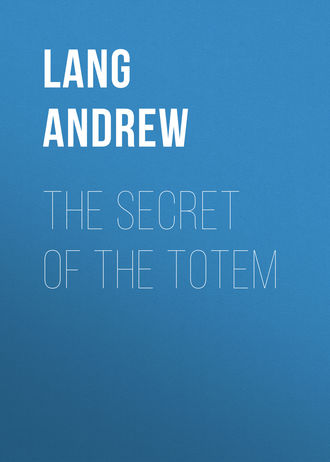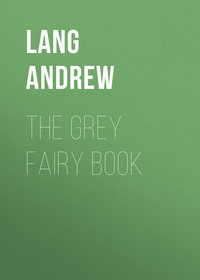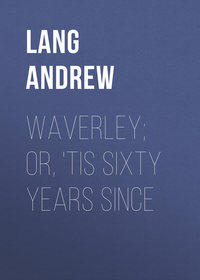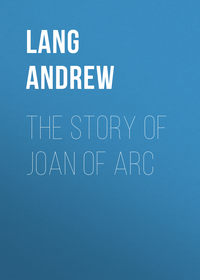 полная версия
полная версияThe Secret of the Totem
68
Northern Tribes, p. 147.
69
Central Tribes, p. 123.
70
Northern Tribes, p. 274.
71
J. A. I., August 1898, pp. 20, 21.
72
Northern Tribes, p. 281.
73
Ibid., p. 175.
74
Ibid.
75
Central Tribes, pp. 125, 126.
76
Northern Tribes, pp. 151, 152.
77
Central Tribes, pp. 125, 126.
78
Spencer and Gillen, Central Tribes, p. 123.
79
Ibid., p. 150. Figures of the objects are given.
80
Northern Tribes, pp. 145-148.
81
Ibid., p. 174.
82
Northern Tribes, pp. 146, 149.
83
Spencer and Gillen, Central Tribes, pp. 153-155.
84
Spencer and Gillen, Central Tribes, p. 123.
85
Op. cit., p. 124.
86
Op. cit., p. 132.
87
The churinga here spoken of are a kind of stone amulets, of very various shapes, marked with such archaic patterns of cups, concentric circles or half circles, and other devices as are found on rock surfaces in our islands, in India, and generally all over the world, as in New Caledonia. The same marks occur on small plaques of slate or schist, in Portuguese neolithic sites, in palæolithic sites, and in Scotland, where Dr. Munro regards them as not of genuine antiquity. See Antiguedades Prehistoricas de Andalucia, Gongora y Martinez, Madrid, 1868, p. 109; Antiguedades Monumentaes do Algarve, vol. ii. pp. 429-462, Estacio da Veiga, Lisbon, 1887; Portugalia, i. Part IV., Severo and Brenha, 1903; Magic and Religion (A. L.), pp. 246-256, 1901. For a palæolithic bone object, exactly like an Arunta churinga, see Hoernes, Der Diluviale Mensch in Europa, p. 138, 1903. It does not follow, of course, that these objects in Europe were ever connected with a belief like that of the Arunta. The things were probably talismans of one sort or another.
88
Proceedings, Linnaean Society of New South Wales, 1898, vol. xxiii. part 3, and vol. xxvi. p. 238.
89
Op. cit., p. 123.
90
Northern Tribes, pp. 272, 373.
91
Central Tribes, p. 265.
92
Geographical Society of Halle, Proceedings, 1883, p. 53.
93
Notes on Some Manners and Customs of the Aborigines of the McDonnell Ranges, belonging to the Arunta Tribe. Gillen, Horn Expedition, iv. p. 183.
94
J. A. I., N.S., p. 278.
95
Ibid., i. pp. 284, 285. Dr. Roth has conjectured that phratries were introduced "by a process of natural selection" to regulate the food supply. But how did they come to regulate marriage? (Aborigines of North-West Central Queensland, pp. 69, 70.)
96
See Northern Tribes, pp. xiii, xiv, 173.
97
Dorsey, Omaha Sociology. Siouan Cults. Bureau of Ethnology, 1881-1882, pp. 238, 239; 1889-1890, p. 537. Frazer, Totemism, p. 24. For Torres Islands, J. A. I., N.S., i. pp. 5-17.
98
Northern Tribes, pp. 224, 225.
99
Spencer and Gillen, p. 169.
100
Natives of South-East Australia, p. 545.
101
Spencer and Gillen, pp. 182, 183.
102
Northern Tribes, p. 225.
103
Native Tribes of Central Australia, p. 417.
104
Ibid., p. 168.
105
L'Année Sociologique v. pp. 82-141.
106
Ibid., i. pp. 35-57.
107
L'Année Sociologique, i. pp. 62, 63.
108
Dr. Durkheim here introduces a theory of Arunta totemic magic. As he justly says, the co-operative principle – each group in a tribe doing magic for the good of all the other groups – cannot be primitive. The object of the magic, he thinks, was to maintain in good condition the totems, which are the gods, of the groups, and, indeed, "the condition of their existence." Later, ideas altered, ancestral souls, reincarnated, were the source of life, but the totemic magic survived with a new purpose, as Magical Co-operative Stores. But why have the more primitive tribes no totem magic? (L'Année Sociologique, v. pp. 117, 118, 119.)
109
L'Année Sociologique, i. p. 64.
110
Ibid., pp. 51, 52.
111
L'Année Sociologique, i. pp. 38-57.
112
Ibid., i. pp. 38-53; v. pp. 87, 88. "Le caractère sacré est d'abord diffus dans les choses avant de se concrétiser sous la forme des personalités déterminés."
113
L'Année Sociologique, i. p. 51, and Note I.
114
For other rules see Spencer and Gillen, Northern Tribes, pp. 320-328.
115
MS. of Mrs. Langloh Parker.
116
L'Année Sociologique, v. pp. 110, 111.
117
L'Année Sociologique, i. p. 63.
118
L'Année Sociologique, i. p. 318.
119
L'Année Sociologique, v. pp. 91, 92.
120
Ibid., i. p. 20.
121
Ibid., i. p. 6.
122
Ibid., i. p. 6.
123
L'Année Sociologique, i. p. 6.
124
Ibid., v. p. 91.
125
Ibid., i. p. 20. The thing would only be possible if the two "clans" were not yet exogamous and intermarrying; but then they would not be "clans," by the definition!
126
In Natives of South-East Australia, pp. 215, 216, we hear on the evidence of "Wonghi informants" that members of the totems are allowed to change totems, "to meet marriage difficulties," and because in different ports of the tribal territory different animals, which act as totems, are scarce. The tribe, haring matrimonial classes, is not pristine, and, if the report be accurate, totemic ideas, from Dr. Durkheim's point of view, cannot be "still in their vigour."
127
L'Année Sociologique, i. p. 51.
128
Ibid., V. p. 110.
129
Ibid., i. p. 6.
130
In Folk Lore, March 1904, I criticised what I regard as an inconsistency in this part of Dr. Durkheim's theory. I here cite his reply textually, from Folk Lore, June 1904, pp. 215-216.
RÉPONSE A M. LANG.
"Dans le Folk Lore de Mars, M. Lang, sous prétexte de se défendre contre mes critiques, m'attaque directement. Je suis donc obligé, à mon grand regret, de demander l'hospitalité du Folk Lore pour les quelques observations qui suivent. Afin d'abréger le débat, je n'examinerai pas si M. Lang s'est justifié ou non de mes critiques, et me borne à répondre à celle qu'il m'a adressée.
"M. Lang me reproche d'avoir renié ma propre théorie sur la nature du totem. J'aurais (L'Année Sociologique, i. pp. 6 et 52) dit qu'un clan peut changer de totem et, dans la même périodique (v. pp. 110, 111), j'aurais établi qu'un tel changement est impossible. En réalité, la seconde opinion qui m'est ainsi attribuée n'est pas la mienne et je ne l'ai pas exprimée.
"En effet, je n'ai pas dit que groupes et individus ne pouvaient jamais changer de totem, mail, ce qui est tout autre chose, que le principe de filiation totémique, la manière dont le totem est réputé se transmettre des parents aux enfants ne pouvait être modifiée par mesure legislative, par simple convention. Je cite les expressions que j'ai employées et que tait M. Lang: "Tant que, d'après les croyances regnantes, le totem de l'enfant était regardé comme une emanation du totem de la mère, il n'y avait pas de mesure legislative qui pût faire qu'il en fut autrement." Et plus bas ("Les croyances totémiques) ne permettaient pas que le mode de transmission du totem pût être modifié d'un coup, par un acte de la volonté collective." Il est clair, en effet, que si l'on croit fermement que l'esprit totémique de l'enfant est déterminé par la fait de la conception, il n'y a pas de legislation qui puisse décider qu'à partir d'un certain moment il aura lieu de telle façon et non de telle autre. Mais mon assertion ne porte que sur ce cas particulier. Et des changements de totems restent possibles dans d'autres conditions comme celles dont il est question dans le Tome I. de L'Année Sociologique. J'ajoute que même ces changements n'ont jamais lieu, à mon sens, par mesure legislative. J'ai, il est vrai, comparé un changement de totem à un changement d'âme. Mais ces changements d'âmes n'ont rien d'impossible (pour l'homme primitif) dans les conditions déterminées. Seulement, ils ne sauraient avoir lieu par décret; or, c'est tout ce que signifiaient les quatre ou cinq mots incriminés par M. Lang. Leur sens est très clairement déterminé par tout le contexte comme je viens de le montrer. En tout cas, après les explications qui précèdent, appuyées sur des textes, il ne saurait y avoir de doute sur ma pensée, et je considère par suite le débat comme clos. E. DURKHEIM."
It distresses me that I am unable to understand Dr. Durkheim's defence. He does say (L'An. Soc. i. p. 6) that the colonies of "clans" too populous "to exist within their space" "end by taking a totem which is all their own, and thenceforth constitute new clans." He also does say that "the totem is not a thing which men think they can dispose of at their will… at least so long as totemic beliefs are in vigour" (L'An. Soc. v. p. 110). But his hypothetical colonies did "dispose of" their old totems "at their will," and took new totems "all their own," and that while "totemic beliefs were in their vigour." I was saying nothing about le principe de filiation totémique, nor was Dr. Durkheim when he spoke of clan colonies changing their totems. I print Dr. Durkheim's defence as others, more acute than myself, may find it satisfactory.]
131
Totemism, p. 62, 1887.
132
Totemism, p. 65, citing Dawson, Australian Aborigines, p. 26 et seq.
133
Dawson, Australian Aborigines, p. 49.
134
Ibid., pp. 26, 27.
135
Kamilaroi and Kurnai, p. 168. Totemism, p. 85.
136
J. A. I., xiv. p. 349. Native Tribes of South-East Australia, p. 100. I do not know certainly whether Mr. Howitt now translates Mukwara and Kilpara as Eagle Hawk and Crow.
137
Native Tribes of South-East Australia, p. 104.
138
Totemism, p. 85. Howitt, Native Tribes of South-East Australia, p. 112.
139
Powell, Report of Bureau of Ethnology, 1879-80, p. 60.
140
Op. cit., p. 68.
141
I have excised a criticism of Dr. Durkheim's theory of the modus by which "primary clans" segmented into secondary clans (L'Année Sociologique, vi. pp. 7-34), because, since a clan, exogamous and with female reckoning of descent, cannot conceivably segment itself, as we have proved, my other arguments are as superfluous as they are numerous.
142
Darwin, Descent of Man, it pp. 361-363. 1871.
143
I do not extend conjecture to a period when "our human or half-human ancestors" may hare had a rutting season, like stags. Cf. Westermarck, History of Human Marriage, pp. 27, 28.
144
Here I cannot but remark on the almost insuperable difficulty of getting savants to understand an unfamiliar idea. M. Salomon Reinach writes, "Another theory (Atkinson, Letourneau) explains exogamy as the result of the sexual jealousy of the male, chief of the primitive group. (Cf. L'Année Sociologique, 1904, pp. 407, 434.) He is supposed to have tabooed all the women of the clan, reserving them for himself. This conception of a chief not only polygamous but omnigamous" (pasigamous must be meant!) "is founded on no known ethnological fact." (Cultes, Mythes et Religions, i. 161, Note I, 1905.) Mr. Atkinson does not speak of a "clan" at all. The "clan," in French, American, and some English anthropologists' terminology, is a totem kin with exogamy and female reckoning of descent. Mr. Atkinson speaks, in the first instance, of "family groups," "the cyclopean family," and a sire with his female mates and children. Such a sire is no more and no less "omnigamous" than a Turk in his harem, except that, as his condition is "semi-brutish," his daughters (as in Panama, in 1699) are not tabooed to him. Ethnology cannot now find this state of things of course; it is a theory of Mr. Darwin's, based on the known habits of the higher mammals.
145
See Mr. Crawley's "The Mystic Rose" for this theory of sexual taboo.
146
Native Tribes of South-East Australia, p. 153.
147
Golden Bough, 2, i. pp. 404-446.
148
Nineteenth Century, xxx. p. 566 sq.
149
See examples in "Cupid and Psyche," in my Custom and Myth, and Mr. Clodd's Tom Tid Tot, pp. 91-93.
150
Der Ursprung des Totemismus. Von Dr. Julius Pikler, Professor der Rechtsphilosophie an der Universität Budapest. K. Koffmann, Berlin, s. a. Apparently of 1900. This tract, "The Origin of Totemism," written in 1899, did not come to my knowledge till after this chapter was drafted.
151
Contributions to the Science of Mythology, i. p. 201.
152
Cf. Social Origins, pp. 141, 142.
153
Ursprung des Totemismus, p. 7.
154
See Colonel Mallery on Pictographs, Report of Bureau of Ethnology, 1888-1889, pp. 56-61.
155
"From two inscriptions found at Elensis it appears that the names of the priests were committed to the depths of the sea, probably they were engraved on tablets of bronze or lead, and thrown into deep water in the Gulf of Salamis. … A clearer illustration of the confusion between the incorporeal and the corporeal, between the name and its material embodiment, could hardly be found than in this practice of civilised Greece." (Golden Bough, 2, i p. 441.) Cf. Budge, Egyptian Magic, pp. 160-162, 1901. "The Egyptians regarded the creation as the result of the utterance of the name of the god Neb-er-tcher by himself Isis could not do her will on him till she learned the name of the god Ra." Messrs. Spencer and Gillen tell us that the great sky-dwelling Being of the Kaitish tribe "made himself and gave himself his name." He made himself very inadequately, according to the myth, which may rest on a false etymology, and the meaning of his name is not pretty, but it would not surprise one if, by uttering his name, he made himself. (Northern Tribes, p. 498.)
156
Der Ursprung des Totemismus, pp. 10, 11.
157
Social Origins, p. 138.
158
I am sure to be told that in Chapter III. I declared local totem groups to be the result of reckoning in the male line, and not primitive, and that, here, I make the primitive animal-named group local. My reply is that in this passage I am not speaking of totem groups, but of local groups bearing animal names, a very different thing. A group may have borne an animal name long before it evolved totemic beliefs about the animal, and recognised it as a totem. No group that was not local could get a name to itself, at this early stage of the proceedings. The "local habitation" precedes the "name."
159
Spencer and Gillen, Native Tribes of Central Australia, p. 139.
160
J. A. I., p. 53, August 1888.
161
Social Origins, pp. 145, 146, and Note 1.
162
J. A. I., August 1888, p. 51. South-Eastern Tribes, p. 736.
163
Other tribes decidedly do understand. Can the Churinga nanja and reincarnation beliefs have set up nescience of obvious facts among the Arunta? "The children originate solely from the male parent, and only owe their infantine nurture to the mother," according to certain Australian tribes with female descent. (Howitt, J. A. I., 1882, p. 502. South-Eastern Tribes, pp. 283, 284. So, too, the Euahlayi. Mrs. Langloh Parker's MS.)
164
Cf. Golden Bough, 2, i. pp. 360-362.
165
Dalton, Ethnology of Bengal, p. 254.
166
On this point of the blood tabu see Dr. Durkheim, L'Année Sociologique, i. pp. 47-57. Also M. Reinach, L'Anthropologie, vol. x. p. 65. The point was laid before me long ago by Mr. Arthur Platt, when he was editing the papers of Mr. J. F. McLennan. Dr. Durkheim charges me (Folk Lore, December 1903) with treating these tabus "vaguely" in Social Origins. I merely referred the reader more than once, as in Social Origins, p. 57, Note I, to Dr. Durkheim's own exposition, also to M. Reinach, L'Anthropologie, x. p. 65. The theory of the sacredness of the blood is not absolutely necessary. The totem tabu often excludes all contact with the totem by the totemist.
167
The passage will be found in Social Origins, pp. 166-175.
168
Social Origins, pp. 295-301.
169
Folk Lore, December 1903, p. 423.
170
Vindication of Cameron's Name. "Saints of the Covenant," i. p. 251.
171
Northern Tribes, p. 10, Note 2.
172
J. J. Atkinson. The natives call us "White Men." We do not call ourselves "God dams," but Jeanne d'Arc did.
173
Trans. Roy. Soc. Canada, vol. ix., vii. pp. 64, 66.
174
Trans. Roy. Soc. Canada, ut supra, pp. 96, 97.
175
Native Tribes of South-East Australia, p. 154.
176
Blackfoot Lodge Tales, p. 208, 1893.
177
Op. cit., p. 225.
178
Native Tribes of South-East Australia, p. 131.
179
Spencer and Gillen, Central Tribes, p. 638.
180
Macbain, Gaelic Etymological Dictionary.
181
Native Tribes of South-East Australia, p. 154.
182
Northern Tribes, pp. 207-210.
183
I am unable to understand how Mr. Howitt can say that he knows no Australian case of such nicknames being adopted. Mentioning Mr. Haddon's theory that groups were named each after its special variety of food, he says "this receives support from the fact that analogous names obtain now in certain tribes, e. g. the Yum." (Op. cit., p. 154.) I understand Mr. Haddon to mean that these names were sobriquets given from without and accepted. If so, Mr. Howitt does know such cases after all. Unluckily he gives no instances in treating of Yuin names, unless names of individuals derived from their skill in catching or spearing this or that bird or fish are intended. These exist among the more elderly Kunaï. (Op. cit., p. 738.) But Mr. Haddon was not thinking of such individual names of senior men, but of group names. On his theory Wolves and Ravens were so styled because wolves and ravens were their chief articles of diet.
184
See Turner's Samoa, and Mr. Tylor, J. A. I., N.S., i. p. 142.
185
J. A. I., August 1888, pp. 53, 54. Also volume xiii. p. 498. Cf., too Native Tribes of South-East Australia, pp. 89, 488, 498.
186
J. A. I., August 1888, p. 67.
187
Bureau of Ethnology Report, 1892, 1893, Part I. pp. 22, 23. Howitt, Organisation of Australian Tribes, p. 134 Information from Mrs. Langloh Parker. These sources give Menomini, Dieri, Murring, Woeworung, and Euahlayi myths, attributing totemic rules and names to divine institution.
188
Howitt, Kamilaroi and Kurnai, p. 25.
189
J. A. I., 1888, p. 498. Cf. Native Tribes of South-East Australia, pp. 482-484. Mura-Mura, till further notice, are mythical ancestors, not reincarnated.
190
Making of Religion, p. 232, 1898.
191
Assoc. Adv. Science, p. 531, and Note 30, 1902. For other discrepant myths, cf. Native Tribes of S.E. Australia, pp. 475, 482.
192
Grey, Vocabulary of the Dialects of South-Western Australia. That only two of seven totems in one tribe were explained is usually overlooked.
193
Kamilaroi and Kurnai, p. 165, 1880.
194
Rep. Reg. Smithsonian Institute, p. 801, 1883.
195
Evolution in Art, pp. 252-257.
196
"This question, Minna Murdu?" ("What totem?") "can be put by gesture language, to which, in the same way, a suitable reply can be made." (Mr. Howitt, on the Dieri. Rep. Reg. Smith. Institute, p. 804, Note I, 1883.)
197
Folk Lore, December 1903.
198
Social Origins, p. 56, Note 1.
199
L'Année Sociologique, v. p. 106, Note I.
200











